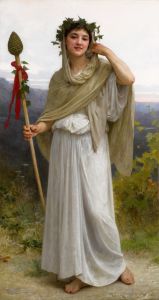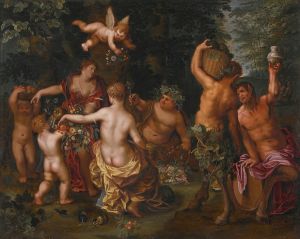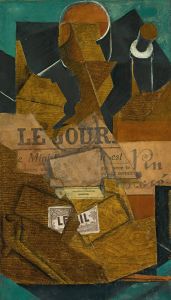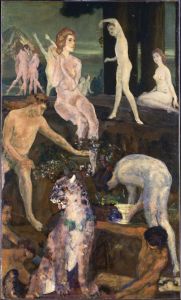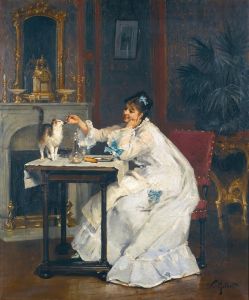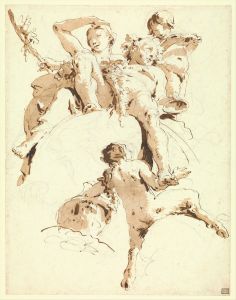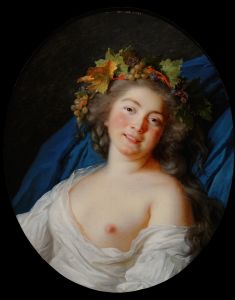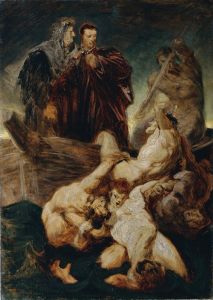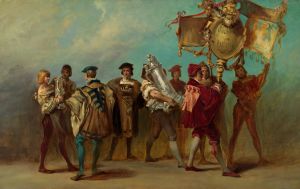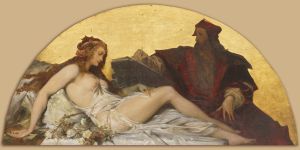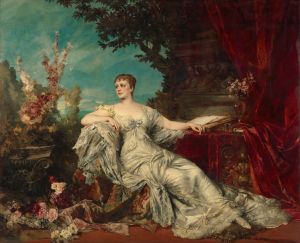
Ruhende Bacchantin
A hand-painted replica of Hans Makart’s masterpiece Ruhende Bacchantin, meticulously crafted by professional artists to capture the true essence of the original. Each piece is created with museum-quality canvas and rare mineral pigments, carefully painted by experienced artists with delicate brushstrokes and rich, layered colors to perfectly recreate the texture of the original artwork. Unlike machine-printed reproductions, this hand-painted version brings the painting to life, infused with the artist’s emotions and skill in every stroke. Whether for personal collection or home decoration, it instantly elevates the artistic atmosphere of any space.
Hans Makart's painting Ruhende Bacchantin (translated as "Resting Bacchante") is a work by the Austrian academic painter Hans Makart (1840–1884), who was renowned for his opulent and theatrical style. Makart was a central figure in the Vienna art scene during the late 19th century and is often associated with the historicist and academic art movements of the time. His works frequently explored themes of mythology, allegory, and sensuality, often rendered in a lush and dramatic manner.
Ruhende Bacchantin depicts a Bacchante, a female follower of Bacchus (the Roman god of wine, revelry, and ecstasy, known as Dionysus in Greek mythology). Bacchantes were often portrayed in classical art and literature as figures embodying wild abandon and ecstatic celebration. In this painting, however, the Bacchante is shown in a moment of repose, contrasting with the typical imagery of frenzied movement and revelry associated with such figures.
The painting exemplifies Makart's mastery of color, texture, and composition. His use of rich, warm tones and his attention to the interplay of light and shadow create a sense of depth and sensuality. The reclining figure of the Bacchante is rendered with a focus on the human form, emphasizing curves and contours that highlight Makart's skill in depicting anatomy. The setting and details surrounding the figure suggest a classical or mythological context, though the exact elements of the background are often secondary to the central figure in Makart's works.
Makart's art was highly celebrated during his lifetime, and his works, including Ruhende Bacchantin, were admired for their decorative qualities and their ability to evoke a sense of grandeur and drama. His influence extended beyond painting; he was a key figure in the cultural life of Vienna, and his style influenced interior design, fashion, and even stage design during the period.
While specific details about the creation and provenance of Ruhende Bacchantin are not widely documented, the painting is consistent with Makart's broader body of work, which often drew inspiration from classical antiquity and sought to merge historical themes with a modern, sensuous aesthetic. Today, Makart's works are appreciated for their historical significance and their role in shaping the visual culture of 19th-century Vienna.





